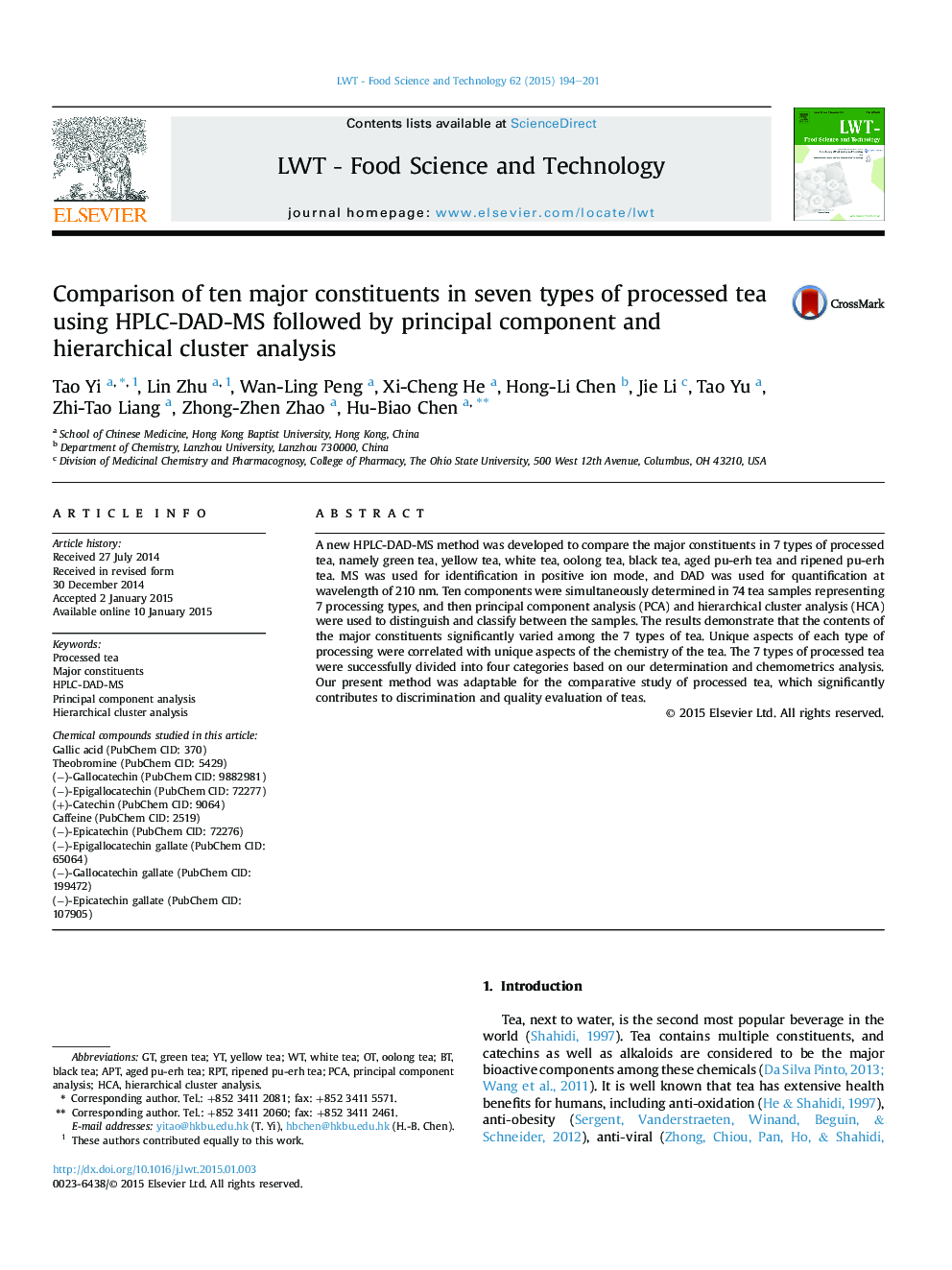| کد مقاله | کد نشریه | سال انتشار | مقاله انگلیسی | نسخه تمام متن |
|---|---|---|---|---|
| 6401302 | 1330881 | 2015 | 8 صفحه PDF | دانلود رایگان |

- Basic preparation steps of 7 types of processed Chinese tea were illustrated.
- 10 components of tea were simultaneously quantified by the LC-DAD-MS method.
- 74 tea samples representing 7 processing methods were comparatively analyzed.
- T-test, PCA and HCA were used to classify tea samples from 7 processing methods.
A new HPLC-DAD-MS method was developed to compare the major constituents in 7 types of processed tea, namely green tea, yellow tea, white tea, oolong tea, black tea, aged pu-erh tea and ripened pu-erh tea. MS was used for identification in positive ion mode, and DAD was used for quantification at wavelength of 210Â nm. Ten components were simultaneously determined in 74 tea samples representing 7 processing types, and then principal component analysis (PCA) and hierarchical cluster analysis (HCA) were used to distinguish and classify between the samples. The results demonstrate that the contents of the major constituents significantly varied among the 7 types of tea. Unique aspects of each type of processing were correlated with unique aspects of the chemistry of the tea. The 7 types of processed tea were successfully divided into four categories based on our determination and chemometrics analysis. Our present method was adaptable for the comparative study of processed tea, which significantly contributes to discrimination and quality evaluation of teas.
Journal: LWT - Food Science and Technology - Volume 62, Issue 1, Part 1, June 2015, Pages 194-201